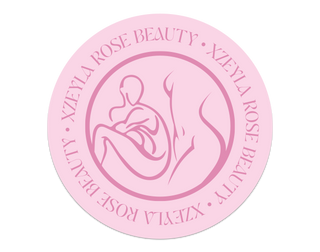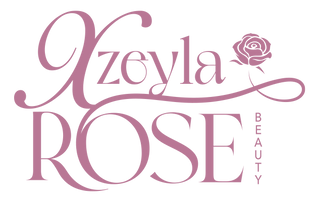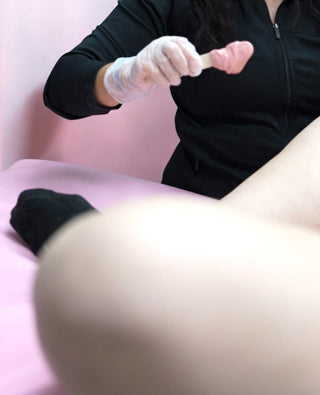If you have ever noticed red bumps, itching, or irritation after waxing, you might be wondering if it is normal or something to be concerned about. Some post-wax reactions are temporary and harmless, while others require proper treatment to avoid worsening.
Here is a breakdown of the four most common post-wax skin reactions, how to tell them apart, and the best ways to treat them.
Histamine Reaction (Normal and Temporary)
What is it?
A histamine reaction happens when the body overreacts to hair being pulled from the follicle. The immune system treats waxing like a minor injury and releases histamine, which can cause redness, swelling, and itching.
Symptoms
- Small, red bumps near the hair follicles
- Mild swelling or puffiness in the waxed area
- Itching or tingling sensation
- Appears immediately or within a few hours after waxing
- Fades within 24 hours
How to Treat It
- Antihistamines such as loratadine, diphenhydramine, or cetirizine block histamine release, reducing swelling, redness, and itching
- Hydrocortisone cream reduces inflammation and calms irritation
- Witch hazel acts as a natural anti-inflammatory and antiseptic, soothing irritation while preventing bacteria buildup
- Aloe vera gel hydrates and soothes the skin while reducing inflammation
Allergic Reaction (Not Normal and Requires Attention)
What is it?
An allergic reaction occurs when the immune system reacts to an ingredient in the wax, such as rosin, fragrance, or preservatives. Unlike a histamine response, this reaction does not fade quickly and often worsens over time.
Symptoms
- Severe itching that does not go away
- Rash, hives, or swollen patches
- Blisters, peeling, or oozing skin
- Swelling that increases instead of improving
- Appears 24 to 48 hours after waxing rather than immediately
How to Treat It
- Antihistamines such as cetirizine, diphenhydramine, or loratadine help reduce the allergic response
- Hydrocortisone cream helps with inflammation, redness, and itching
- Fragrance-free moisturizer supports skin barrier recovery
- Avoid re-waxing until skin fully heals
- For severe reactions, a doctor may prescribe a stronger steroid or recommend a patch test to identify the exact allergen
Bacterial Folliculitis (Hair Follicle Infection)
What is it?
Bacterial folliculitis occurs when bacteria, usually staphylococcus, enter the hair follicles after waxing. This is one of the most common causes of post-wax breakouts and is often mistaken for an allergic reaction.
Symptoms
- Small red or pus-filled bumps that resemble acne
- Itchy, irritated skin that may feel warm
- Bumps appear a few days after waxing rather than immediately
- Can worsen with sweat, friction, or tight clothing
How to Treat It
- Benzoyl peroxide kills acne-causing bacteria in the follicles
- Antibacterial soap with chlorhexidine or tea tree oil cleans the area and prevents further infection
- Topical antibiotics such as neosporin or bacitracin help heal inflamed bumps caused by bacteria
- Witch hazel prevents further irritation and bacterial buildup
Fungal Folliculitis (Yeast Infection in the Hair Follicles)
What is it?
Fungal folliculitis occurs when yeast overgrows in hair follicles, leading to itchy, inflamed bumps. This often happens in humid environments and is more common on the back, chest, and bikini line.
Symptoms
- Clusters of uniform red bumps, sometimes with whiteheads
- Itchy or burning sensation
- Does not respond to regular acne treatments
- Worsens with sweat, tight clothing, or heavy lotions
How to Treat It
- Antifungal creams such as clotrimazole or ketoconazole target yeast overgrowth and reduce inflammation
- pH-balanced antifungal cleansers help prevent further irritation
- Avoid thick oils or heavy moisturizers as these can worsen fungal infections
- Wear loose, breathable fabrics to allow air circulation and prevent yeast buildup
Can You Use Antifungal Powder on the Mons Pubis?
Yes, antifungal powders such as lotrimin or zeasorb can be applied to the mons pubis to absorb moisture, reduce friction, and prevent fungal overgrowth.
How to Apply Antifungal Powder Safely
- Make sure the area is clean and dry before applying the powder
- Use a small amount and gently dust it over the affected area
- Avoid getting it inside the vaginal opening; apply only on the mons pubis and bikini area
- Apply once or twice a day, especially after showering or sweating
If a powder feels too drying, antifungal creams such as clotrimazole or ketoconazole work just as well. Always consult your doctor before using any of these recommendations
Final Takeaway
If the reaction appears immediately and fades within a day, it is likely a histamine response. If bumps spread, itch intensely, or last for days, it could be an allergy, bacterial infection, or fungal issue. Understanding the timing and symptoms of each reaction will help determine the right treatment.


